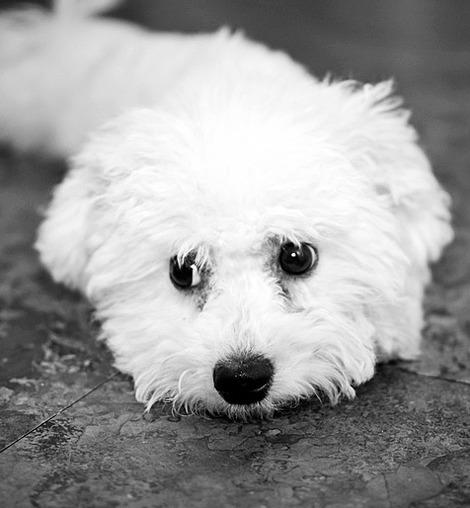This is the Best Way to Train a Puppy

Adding a puppy to a household can be fun and hectic, especially if you already have a dog. Anyone taking the plunge - including the Obamas, who recently welcomed Sunny, a Portuguese water dog, to their pack - will benefit from some training. Dog trainer Sarah Wilson, author of "My Smart Puppy," offers tips for training a puppy and setting a course for many happy years together.
Begin training on Day One
Wilson describes puppies as "little learning sponges," so help them acclimate to bath time, car rides and daily walks as soon as possible. In addition to her own 9-year-old pooch, Wilson cares for a 10-week-old poodle-golden retriever mix named Button that already has learned the ropes. Button knows the "sit" and "down" command, she comes when called and doesn't mind having her nails done. Fun, short sessions keep Button engaged. Treats also help set a positive tone.
"Her tail is wagging a mile a minute, but we are learning to communicate and forging a foundation," Wilson says. "People often say, 'Wait until they're 6 months old until you start training. [That's] based on older methods. Modern methods are fun and you can start at 7 weeks."
Begin by teaching your puppy its name through repetition and positive reinforcement (food!). Wilson recommends saying the puppy's name and then offering a treat. Follow that exercise by showering the puppy with affection when it recognizes its name. The minute it looks at you, something wonderful should happen, Wilson says. To avoid packing on the pounds during training sessions, use some of the puppy's daily kibble as treats. Once your puppy learns its name, move on to the "sit" and "down" commands.
Also see: 10 of the cutest puppies on YouTube
Keep training sessions short and focus on fun. She notes that most puppies won't be able to master proper leash skills until they are 6 months old. Instead, invest in a harness or halter and let puppies take time to smell the roses, the daisies, the hydrant and other outdoor discoveries.
"They are so easily distracted, and their job right now is to explore and be socialized," Wilson says. "I want [Button] to explore things, to run up to people and be confident and happy in the world. That's her job right now."
While it's tempting to keep puppies indoors until they have received all of their vaccinations, Wilson encourages pet owners to get outdoors and let puppies be puppies. Early socialization is an essential tool to transform frisky puppies into well-adjusted, phobia-free adult dogs. Ask your vet for advice, and avoid high-traffic areas such as dog parks or pet supply stores during the early weeks.
Persistence is better than perfection
Train the puppy to sit before exiting the front door, before receiving a treat, and whenever you hold its food bowl. Adults should focus on teaching puppies and then help kids set the same expectations. Over time, puppies will learn the house rules, whether commands come from Mom, Dad or the kids.
"You don't have to be perfect; you have to be persistent," Wilson says. "Trying is much more important than perfection."
Good behavior also is important during those early years, so resist the urge to give super cute puppies a pass. Early bad habits can be hard to break, and Wilson frequently receives calls from people seeking tools to stop a dog from mouthing people. If wriggly puppies are allowed to mouth your hand during play time, don't be surprised if they do it with a full set of canines a few years later. If you teach puppies to run when they have a toy because it's cute and funny, expect them to do it as adults.
"Train [your puppy] as if it were an adult dog," she says. "I know it's easier said than done."
Take time introducing puppies to adult dogs
Very often, people expect their adult dogs to form a natural kinship with cuddly new arrivals. According to Wilson, that's a recipe for problems. Reputable animal shelters or rescue groups will encourage scheduling a meet-and-greet session prior to approving a pet adoption. She notes that Bo Obama probably spent plenty of time getting acclimated to his new sister before the world met Sunny. Wilson recommends that pet parents take the same approach when introducing puppies to their new fur family. Start slow with a meet-and-greet session, preferably away from home, so dogs can get acclimated in a stress-free environment. Ideally, two handlers will walk with dogs together as a bonding exercise.
"Your dog did not sign up for a new roommate," she says. "How would you react if you came home and your family said, 'You have a new dog'? I'm a big believer in gates and crates for first week or more when you are forming relationships with the new dog."
Also see: How to potty train a puppy
Opposites attract
Dogs with similar personalities are more likely to fight, Wilson says. Avoid potential skirmishes by seeking a new addition with vastly different traits from your older dog. If you have a laid back elder statesman, opt for a frisky female pooch. If your dog is a strong and super-smart female, it may interact best with a young and submissive male dog.
"Be very careful with two females," she warns, noting that Bo and his frisky new sister Sunny seem to be perfectly matched. "The Obamas made the perfect dog choice: an older male dog with a younger, sweet dog. They appear to be having a blast."
Related stories:
